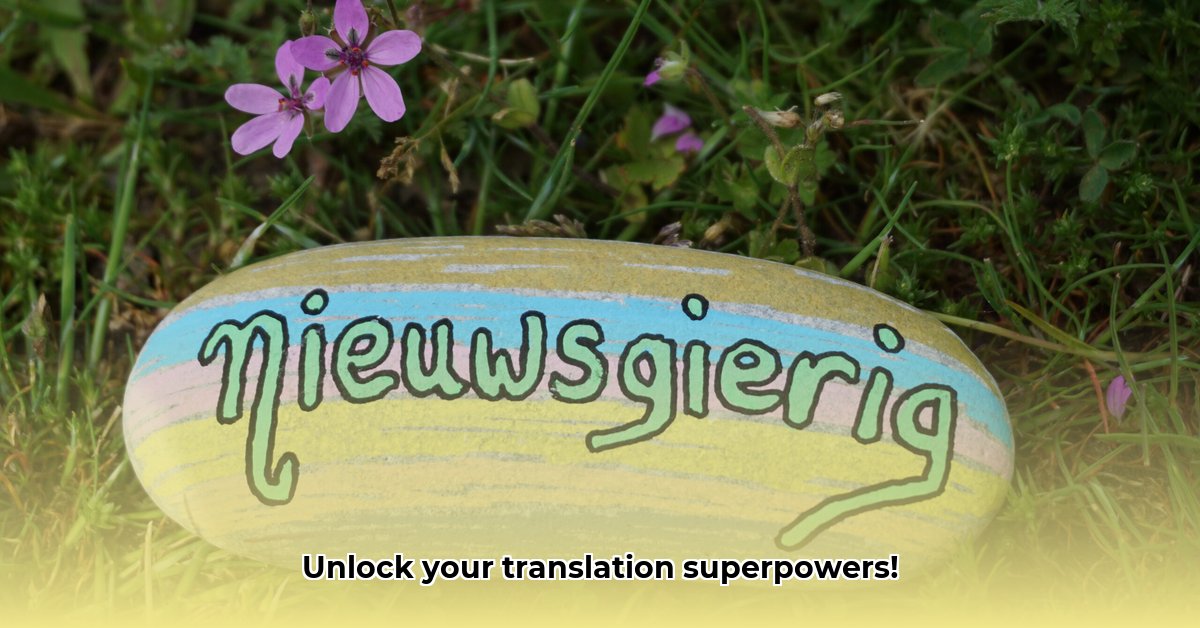
Ik Ben Nieuwsgierig: Unpacking the Nuances of Translation
Have you ever tried translating the Dutch word "nieuwsgierig"? It might seem like a simple swap for "curious," but that's a trap! The reality is far more nuanced. This article will delve into the fascinating complexities of this seemingly straightforward word, showing why direct translation often falls short. We'll explore how context - the situation, the speaker, even the cultural backdrop - dramatically alters the meaning, and how this impacts the choice of appropriate English equivalents. Whether you're a translator, language learner, or simply intrigued by the intricacies of language, this exploration will provide the tools to accurately convey the essence of "nieuwsgierig" every time.
More Than Just Curiosity: Exploring the Shades of Meaning
"Nieuwsgierig" isn't merely about simple curiosity; it encompasses a spectrum of intensity and connotation. Consider a child's wide-eyed wonder at a ladybug – that's "nieuwsgierig." Now, imagine a detective meticulously piecing together evidence – "nieuwsgierig" again, but with a much more focused and driven energy. Finally, picture a nosy neighbour peering into your window – yet another instance of "nieuwsgierig," but this time carrying a distinctly negative undertone. The subtle shift in meaning is significant.
English offers several potential translations, each with its own unique implications: "inquisitive" suggests a more systematic approach; "eager" emphasizes anticipation; "interested" denotes a more general curiosity; and "nosy," as we've seen, carries a negative judgment. Selecting the correct equivalent demands a deep understanding of context.
Cultural Context: The Unspoken Influence
Culture significantly shapes how "nieuwsgierig" and its English counterparts are perceived and interpreted. In some cultures, open questioning demonstrates engagement; in others, it's considered rude or intrusive. Imagine a casual inquiry versus an aggressive demand for personal details. Both may register as "nieuwsgierig" in Dutch, yet their English translations would be vastly different – perhaps “interested” versus “nosy” or even “prying.” Ignoring this cultural dimension can lead to serious misinterpretations and communication breakdowns.
Mastering the Art of Accurate Translation: A Practical Guide
Let's translate "nieuwsgierig" effectively with these steps:
Contextual Analysis: First, meticulously examine the situation. Who's speaking? To whom? What's their relationship? What's the overall tone – formal or informal, friendly or confrontational? These factors significantly impact your translation choices.
Intensity Assessment: Gauge the strength of the curiosity – is it a gentle interest or a burning desire to know? Is it a casual question or a determined investigation? This determines the appropriate intensity of the English equivalent.
Strategic Word Choice: Select the English word that most precisely reflects the nuances of the Dutch word. Sometimes, the simple "curious" falls short, and terms such as "inquisitive," "eager," or even "nosy" prove more effective.
Iterative Refinement: After selecting your translation, review it critically within the broader context. Does it accurately convey the original meaning and intent? If not, continue refining your choice until you achieve precision. Seek feedback for additional insight.
Here are some illustrative examples:
| Dutch Sentence | English Translation Options | Nuance |
|---|---|---|
| "Ik ben nieuwsgierig naar jouw vakantie." | "I'm curious about your holiday."; "I'm interested in your holiday." | Polite, general interest. |
| "Ik ben nieuwsgierig naar de details." | "I'm eager to hear the details."; "I'm keen to know more details." | Intense interest, desire for more information. |
| "Hij is wel erg nieuwsgierig, hè?" | "He's awfully nosy, isn't he?"; "He's very prying, isn't he?" | Negative connotation, implies intrusive behavior. |
| "Ik ben nieuwsgierig of je het leuk vond." | "I'm curious to know if you enjoyed it."; "I'm interested to hear if you liked it." | Gentle inquiry, showing interest in the other person's experience. |
The Ongoing Journey of Linguistic Precision
Translating "nieuwsgierig," like any word, is a subtle craft. It requires more than simple word-swapping; it necessitates understanding the linguistic nuances of both languages and their cultural contexts. This skill is honed through experience and an appreciation for the complexities of language. Consequently, the next time you encounter "nieuwsgierig," remember it’s not merely about curiosity; it's about deciphering the speaker’s intent within their cultural context. This journey of precise translation continues, with ongoing research deepening knowledge of linguistic nuances and their impact.